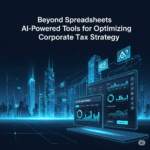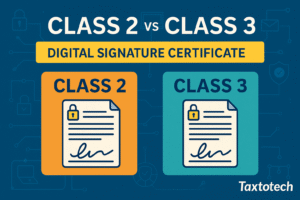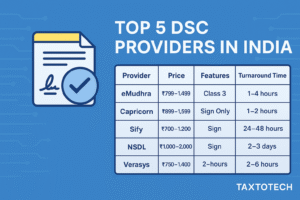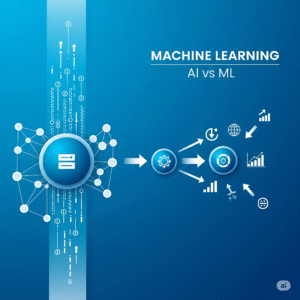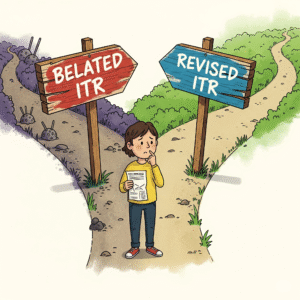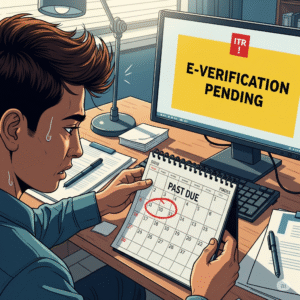Every tax season, a common question echoes: “Am I truly getting all the deductions I deserve?” For countless individuals and small businesses, the answer is often a resounding “probably not.” The sheer complexity of the tax code, coupled with the meticulous effort required to track every single expense, means that valuable hidden deductions frequently go unclaimed. It’s like leaving money on the table, year after year.
But what if there was a way to uncover these elusive savings without becoming a tax expert yourself? At Taxtotech, we believe that AI in tax software is revolutionizing this very challenge. This isn’t just about faster data entry; it’s about sophisticated intelligence meticulously scanning your financial life to identify every legitimate opportunity to reduce your taxable income. Let’s explore how these cutting-edge AI tools are transforming tax preparation from a tedious chore into a powerful financial optimization strategy.
The Hidden Cost of Missing Deductions: Why Every Dollar Counts
For most taxpayers, finding deductions feels like a scavenger hunt. You know they’re out there, but pinpointing the specific ones that apply to your unique situation, and then correctly documenting them, can be overwhelming. This leads to a significant problem: missed deductions.
Why are they so often overlooked?
- Complexity of Tax Code: The sheer volume and ever-changing nature of tax laws make it difficult for the average person to keep up. What was deductible last year might not be this year, or a new deduction might have emerged.
- Lack of Awareness: Many deductions are not widely publicized or are highly specific to certain professions or life events (e.g., educator expenses, certain medical travel costs, home office deductions for self-employed individuals).
- Manual Effort & Disorganization: Keeping track of every receipt, every mileage log, or every small business expense throughout the year is a monumental task. Without systematic record-keeping, many legitimate write-offs simply fall through the cracks.
- Fear of Audit: Some taxpayers avoid claiming less common deductions out of fear of triggering an audit, even if they are legitimate.
The financial impact of missing these hidden deductions can be substantial. Even small, recurring expenses can add up to hundreds or thousands of dollars in unclaimed savings, directly impacting your tax refund or the amount you owe. This is precisely where the power of AI in tax software shines.
How AI in Tax Software Goes Beyond Basic Data Entry
Traditional tax software essentially acts as a digital form filler. You input the numbers, and it performs the calculations. While helpful, it relies entirely on your knowledge of what’s deductible and your diligence in tracking every relevant expense.
AI in tax software operates on an entirely different level. It’s not just about what you tell it; it’s about what it can infer and discover from your financial data.
Natural Language Processing (NLP) for Contextual Understanding
At the core of smart deduction identification is Natural Language Processing (NLP). This branch of AI allows software to understand and interpret human language from various sources:
- Transaction Descriptions: NLP can analyze cryptic bank statement descriptions or credit card charges (“Amazon purchase,” “Coffee Shop XYZ”) and infer potential deductible categories based on patterns. For example, “Uber to Client Meeting” might be flagged as business travel.
- Receipt Analysis: When you snap a photo of a receipt, advanced AI uses Optical Character Recognition (OCR) combined with NLP to not only extract the vendor and amount but also understand what was purchased (e.g., “office supplies,” “business meal”) and categorize it accordingly.
- Conversational Interfaces: As discussed in our previous article on AI chatbots, NLP enables the software to engage in dynamic conversations, asking clarifying questions that are directly relevant to uncovering deductions.
Machine Learning (ML) for Pattern Recognition
Machine Learning is what makes AI in tax software “smart.” It allows the system to learn from vast amounts of data without being explicitly programmed for every single scenario.
- Historical Data Analysis: ML algorithms are trained on millions of past tax returns, financial transactions, and tax codes. They learn to identify patterns in spending and income that correlate with specific deductions or credits.
- Predictive Insights: Based on your past financial behavior and current inputs, ML can predict potential deductions you might qualify for, or suggest areas where you could optimize your spending for future tax benefits.
- Adaptive Learning: The more users interact with the software and the more data it processes (anonymously and securely, of course), the more intelligent and accurate its deduction-finding capabilities become.
Data Integration Across Accounts
The true power of AI for deduction identification comes from its ability to integrate and analyze data from multiple financial sources:
- Bank Accounts & Credit Cards: Seamlessly connecting your banking and credit card accounts allows the AI to scan every transaction for potential deductions, often categorizing them automatically.
- Payroll & Investment Platforms: Importing W-2s, 1099s, and investment statements directly enables the AI to cross-reference income against expenses and identify relevant investment-related deductions or capital loss harvesting opportunities.
- Other Financial Apps: Integration with popular budgeting or expense tracking apps creates a holistic view of your financial life, ensuring no stone is left unturned.
Unearthing Your Hidden Deductions: AI’s Superpowers in Action
So, how does this sophisticated technology actually help you find those elusive hidden deductions?
- Smart Categorization of Transactions: Imagine uploading a year’s worth of bank statements. Instead of manually sifting through hundreds of entries, AI can automatically categorize “Staples,” “Office Depot,” or “Microsoft 365 subscription” as potential office expenses for a freelancer. It learns your spending habits and applies relevant tax rules.
- Proactive Prompting & Dynamic Questioning: If the AI detects a series of medical bills, it might proactively ask if you also had travel expenses for medical appointments, or if you paid health insurance premiums yourself. If it sees donations, it might ask about mileage driven for charity work. These aren’t generic questions; they’re intelligent prompts based on your financial data.
- Cross-Referencing & Discrepancy Detection: AI excels at spotting inconsistencies. If you entered income from a side gig but didn’t list any corresponding expenses, the AI might prompt you to review for legitimate business write-offs. This helps prevent missed deductions and also flags potential issues that could lead to IRS scrutiny.
- Staying Updated with Tax Law Changes: Tax laws are constantly evolving. AI tax software is continuously updated with the latest regulations, ensuring that any new deductions are recognized, and old ones are phased out or adjusted accordingly. You don’t have to worry about missing out on a new tax break because you weren’t aware of a recent legislative change.
- Identifying Lesser-Known Credits/Deductions: Beyond the common itemized deductions, there are many specific credits and deductions that apply to niche situations. AI, with its vast knowledge base, is much more likely to flag these for your review. For instance, the AI in tax software might help you uncover:
- State Sales Tax Deduction: If you live in a state without income tax or made significant purchases (like a car), AI can help you determine if deducting sales tax is more beneficial than income tax.
- Out-of-Pocket Charitable Contributions: Beyond cash donations, expenses incurred while volunteering (e.g., mileage, supplies) can be deductible, and AI can help categorize these if you input them.
- Home Energy Efficiency Credits: If you’ve upgraded your home with new windows or HVAC systems, AI might prompt you about potential energy credits.
- Jury Duty Pay Turned Over to Employer: A small but often missed deduction.
- Health Savings Account (HSA) Contributions: Often overlooked, these contributions are tax-deductible.
Examples of Hidden Deductions AI Can Help Uncover
| Deduction Category | Traditional Method (Risk of Missing) | AI-Powered Approach (Benefit) |
| Home Office Expenses | Manual tracking of utilities, rent/mortgage percentage; often forgotten. | AI analyzes recurring utility/internet bills, identifies rent/mortgage payments, and calculates the percentage based on space usage. |
| Business Mileage | Manual logbooks; easily forgotten or incomplete. | AI integrates with mileage tracking apps or identifies patterns in GPS data/travel-related transactions. |
| Professional Development | Requires user to know courses/subscriptions are deductible. | AI categorizes payments to online learning platforms, professional associations, or subscription services. |
| Medical Expenses (Itemized) | Requires detailed tracking of every co-pay, travel to appointments. | AI aggregates prescription costs, doctor visits, and even identifies potential medical travel expenses from linked accounts. |
| Charitable Contributions | Often only large cash donations are remembered; small out-of-pocket costs missed. | AI can flag small purchases related to volunteering (e.g., ingredients for charity bake sale, mileage driven). |
| Job Search Expenses | Rarely remembered to track for a new job in the same field. | AI can identify payments for resume services, travel to interviews, or job search website subscriptions. |
Real-World Scenarios: AI in Action for Common Filers
Let’s look at how AI in tax software can practically assist different types of filers in finding those hidden deductions:
- The Freelancer/Gig Worker: You juggle multiple clients, travel for meetings, and subscribe to various software tools. An AI-powered system connects to your business bank account and credit card. It automatically categorizes your software subscriptions, flags your Uber rides to client sites as business travel, and prompts you about your home office deduction based on your utility bills and internet usage. It might even suggest depreciating a new laptop based on its purchase from a tech retailer.
- The Homeowner: You just installed energy-efficient windows. Your AI tax software, seeing large payments to a home improvement store, proactively asks if these upgrades qualify for energy tax credits, guiding you to input the necessary details. It also automatically imports your mortgage interest and property tax data directly from your lender, ensuring these significant deductions aren’t missed.
- The Educator: You frequently buy supplies for your classroom out-of-pocket. AI, upon recognizing transactions at office supply stores or even specific online education platforms, might prompt you about the educator expense deduction, guiding you to accurately account for those costs.
Choosing AI Tax Software for Deduction Maximization
When selecting AI in tax software to help you find hidden deductions, look for platforms that prioritize:
- Robust Data Import Capabilities: Can it securely connect to all your bank accounts, credit cards, and investment platforms? The more data it can analyze, the more deductions it can find.
- Intelligent Categorization: Does it offer smart categorization features that learn from your habits and provide suggestions?
- Proactive Alerts & Prompts: Does it ask intelligent questions based on your financial data, guiding you to potential deductions you might overlook?
- Up-to-Date Tax Law Integration: Ensure the software is constantly updated with the latest tax laws and regulations to catch new deductions or changes to existing ones.
- Security and Privacy: Always verify the software’s security protocols, as you’ll be entrusting it with highly sensitive financial information.
AI Features Checklist for Maximizing Deductions
| AI Feature | Description | Your Action Item |
| Automated Expense Categorization | AI learns from your spending and tags transactions for tax-relevant categories (e.g., office supplies, business travel). | Link all bank/credit accounts; review suggested categories for accuracy. |
| OCR for Receipt & Document Scanning | Scans and extracts key data from physical receipts or digital documents. | Take photos of all receipts; ensure clear images for best results. |
| Dynamic Tax Interview/Prompting | Asks follow-up questions tailored to your inputs and linked data to uncover more deductions. | Answer all prompts truthfully and thoroughly. |
| Tax Law Update Integration | Automatically incorporates the latest changes in tax codes and new deductions. | Ensure your software subscription is active for real-time updates. |
| Hidden Deduction Suggestions | Proactively suggests lesser-known deductions based on your financial profile (e.g., energy credits, educator expenses). | Review suggestions carefully and provide any requested supporting information. |
| Error & Anomaly Detection | Flags inconsistencies or unusual entries that might be a missed deduction or an input error. | Address all warnings and errors prompted by the software. |
Conclusion: Empower Your Tax Season with AI, Courtesy of Taxtotech
The days of leaving money on the table due to overlooked hidden deductions are rapidly coming to an end, thanks to the remarkable capabilities of AI in tax software. These intelligent tools are doing more than just crunching numbers; they’re actively working to analyze your financial landscape, identify every eligible saving, and guide you through the process with unparalleled accuracy and efficiency.
At Taxtotech, we champion the use of technology to simplify complex financial tasks and empower you to make smarter decisions. By leveraging AI-powered tax software, you’re not just filing your taxes; you’re transforming your tax preparation into an optimized, stress-free experience that truly maximizes your refund.
We’d love to hear from you, our savvy Taxtotech Readers!
- What’s the most surprising or valuable “hidden deduction” you’ve ever discovered, whether with or without AI?
- Are there any specific types of expenses you find particularly challenging to track for tax purposes? How do you think AI could further simplify this?
- If you’ve used AI tax software, what was your “aha!” moment when it helped you find a deduction you would have otherwise missed?
Share your stories and insights in the comments below! Your experiences help our community learn and grow. And for more in-depth reviews and practical guides on how technology is revolutionizing your financial world, keep exploring here at https://taxtotech.com. Let’s unlock every possible saving together!
FAQ
Q1: How does AI tax software find deductions I didn’t know about?
A1: AI tax software uses advanced techniques like Natural Language Processing (NLP) to understand transaction descriptions and Machine Learning (ML) to recognize patterns in your spending habits. By analyzing your linked bank accounts, credit cards, and other financial data, it can identify expenses that qualify as deductions, even if you weren’t aware of them or didn’t explicitly label them as such. It also stays updated with the latest tax laws to find new opportunities.
Q2: Is it safe to link my bank accounts and credit cards to AI tax software?
A2: Reputable AI tax software providers use bank-level encryption and security measures (like multi-factor authentication) to protect your financial data. They typically use secure, read-only connections to import your transaction history, meaning they cannot move or access your funds. Always choose well-known and trusted tax software brands that adhere to strict data privacy standards.
Q3: Can AI tax software guarantee I won’t miss any deductions?
A3: While AI tax software significantly reduces the likelihood of missing deductions by automating categorization and proactively suggesting opportunities, no software can offer a 100% guarantee. Your input accuracy, the comprehensiveness of the data you link, and the unique nuances of your financial situation still play a role. It’s an incredibly powerful tool for maximization, but it doesn’t replace the need for careful review.
Q4: Does using AI to find deductions increase my risk of an audit?
A4: On the contrary, using AI-powered tax software can often reduce your audit risk. By minimizing human error, cross-referencing data for consistency, and ensuring your return complies with the latest tax laws, AI helps produce a more accurate and compliant tax filing. This precision can make your return less likely to raise red flags with tax authorities.
Q5: What types of hidden deductions are most commonly found by AI tax software?
A5: AI tax software often excels at finding deductions related to business expenses (for freelancers, gig workers, and small businesses), home office costs, professional development, certain medical expenses, charitable contributions (especially non-cash or out-of-pocket costs), and energy-efficient home improvements. It’s particularly effective at identifying these from raw transaction data.


